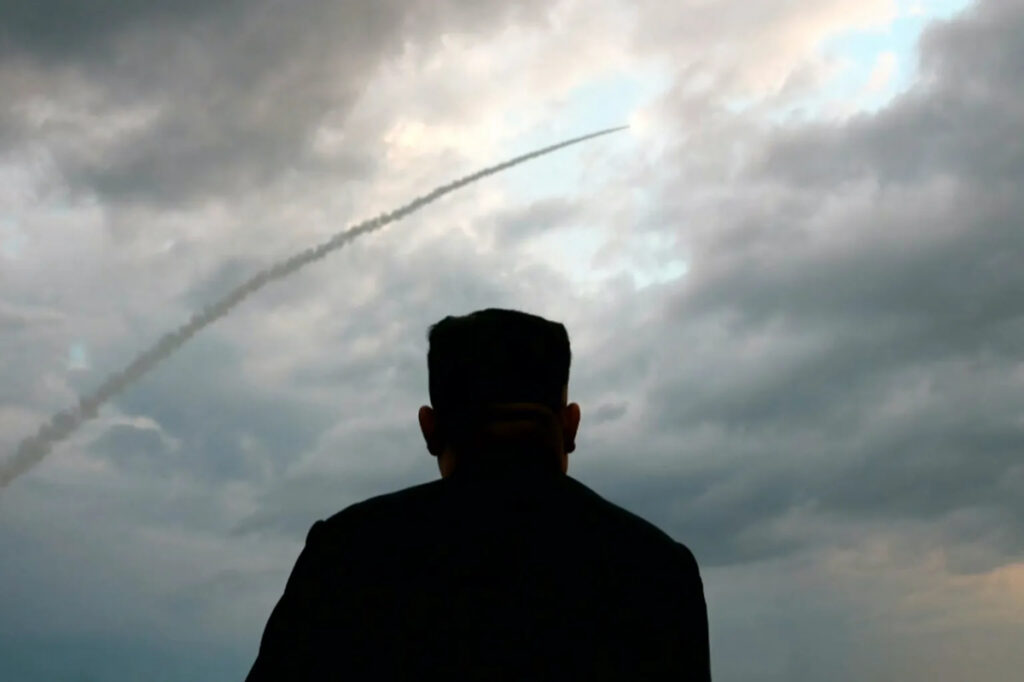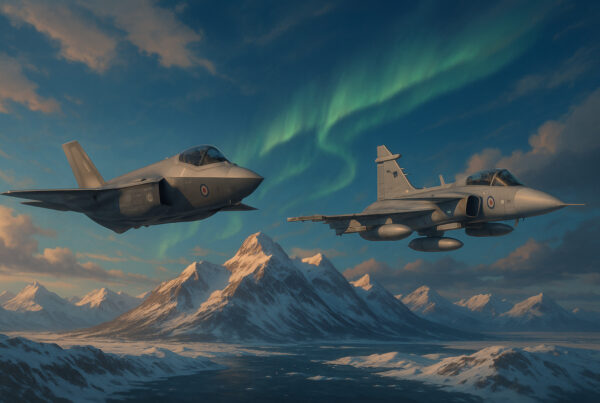South Korea claims at least one missile test failed but North Korea’s pursuit of MIRV capabilities will intensify their arms race

This screen-grab image taken from North Korean broadcaster KCTV in 2019 shows North Korean leader Kim Jong Un watching the launch of a ballistic missile at an unknown location. Photo: AFP / KCTV
(Written by Gabriel Honrada. Originally published here on Asia Times, republished with permission.)
North Korea’s recent test launch of ballistic missiles, with at least one capable of carrying a “super-large warhead”, has raised new alarm in neighboring South Korea as both rival sides vie to field weapons with increasingly destructive power.
In late June, North Korea launched at least three missiles with dummy warheads, according to multiple news reports citing South Korean military sources. The tests came after Pyongyang vowed “offensive and overwhelming” responses to new US military drills with South Korea and Japan, the reports said.
The state-run Korean Central News Agency (KCNA) claimed that North Korea successfully tested a multiple-warhead system capable of releasing three independently targeted warheads and a decoy.
However, 38 North says that South Korean military footage suggests that one of the missiles likely malfunctioned at an altitude of 100 kilometers, raising doubts about North Korea’s claims and capabilities.
Despite the likely setback, the tests show North Korea’s ongoing commitment to developing sophisticated missile technology, including multiple independently targetable reentry vehicles (MIRV) missiles, 38 North said in an analysis of the tests.
38 North notes that certain of the tests involved what appeared to be the first stage of a Hwasong-16 solid-propellant intermediate-range ballistic missile (IRBM) and a new payload section. It marked the first time North Korea has mentioned multiple warhead development since January 2021, the 38 North analysis said.
According to 38 North, the tests could eventually lead to the operational deployment of more complex and potentially destabilizing military technology. That, in turn, could complicate regional defense dynamics as North Korea is able to increase the number of deployable warheads for a given number of missiles and launchers.
Despite North Korea’s recent MIRV test, Pyongyang is still far from mastering the technology, Choe Sang-Hun claims in a June 26, 2024 New York Times article. The writer claims there was “deception and exaggeration” in KCNA’s announcement on the tests while adding that state media altered photos of one of the tests.
He notes that South Korean officials dismissed one of the tests involving an alleged hypersonic missile as a failure, with the missile reportedly exploding over North Korean waters after traveling 240 kilometers.
Choe notes that while MIRVs have long been on North Korea’s weaponry wish list, Pyongyang has yet to show that it can design a warhead that could survive reentry into the atmosphere and pose a credible threat to the US, let alone field sophisticated MIRV-tipped missiles.
Despite North Korea’s apparent MIRV test failure, it may receive a future helping hand from Russia, its longtime Cold War ally. Since the outbreak of the Ukraine war, Russia has moved from being a reluctant enforcer of sanctions on North Korea to possibly undermining international efforts to rein in Pyongyang’s nuclear and missile programs.
The two autocracies entered into a strategic partnership last month. While on the surface the partnership eschews missile and nuclear weapons technology exchanges, the possibility of such transfers cannot be discounted.
Last month, Asia Times noted that Russia has used North Korean ballistic missiles against Ukraine and that Pyongyang may have exported over 5 million artillery shells to Russia to alleviate the latter’s ammunition shortage on the front lines. In exchange, North Korea could receive from Moscow badly needed energy supplies, food aid and much-coveted missile technology.
MIRVs were introduced in the 1960s to allow a missile to carry numerous nuclear warheads to various targets, unlike conventional missiles that hold only one warhead. Although the early MIRVs were not intended to penetrate missile defenses, they are far more challenging to intercept than standard missiles.
Asia Times noted in November 2023 that MIRVs can be incredibly destabilizing for strategic security as the weapon favors first strikes since one missile can hit multiple targets.
MIRVs allow states to launch multiple warheads at one target, with several smaller warheads causing more damage than a single warhead of the same size. Additionally, MIRVs make it easier to defeat missile defense systems.
Furthermore, MIRVs make it more likely that small and medium-sized nuclear arsenals will be easily targeted and destroyed in a first strike, leading to a considerable loss of capability with each destroyed launch platform.
MIRVs force nuclear-armed states to expand and disperse their weapon stockpiles to guarantee reliable second-strike capability. Additionally, MIRVs require the manufacturing of additional nuclear warheads for missile deployment.
Aside from claiming to have tested MIRVs, North Korea had previously asserted that it had conducted a successful hypersonic weapon test.
Asia Times reported in April 2024 that North Korea tested its Hwasong-16B hypersonic IRBM, with North Korean Supreme Leader Kim Jong Un describing the missile as a critical piece of the country’s nuclear deterrent against its “enemies” – a thinly veiled reference to the US, South Korea and Japan.
South Korea’s Joint Chiefs of Staff assessed that the missile flew 600 kilometers but accused North Korea of exaggerating its capabilities. Nevertheless, they acknowledged that North Korea’s missile capabilities were improving.
North Korea’s nuclear force is highly dependent on missiles as it lacks advanced planes or submarines to launch them. While Pyongyang has developed solid-fuel missiles that are easier to hide, move and launch and has been testing hypersonic missile tech, South Korean officials say it is a long way from succeeding.
Nuclear weapons are central to the existence of the North Korean state, with Pyongyang persisting in advancing its missile and nuclear programs despite having one of the world’s poorest and most heavily sanctioned economies.
North Korea can use its nuclear weapons to break the logic of extended deterrence between South Korea, Japan and the US by threatening a direct attack on the US, thereby dissuading joint military action from the latter three.
North Korea’s nuclear arsenal also keeps the Kim dynasty in power, as the decision to launch the country’s nuclear weapons is solely with Supreme Leader Kim. That raises the threat of nuclear retaliation should the Kim regime be threatened or nuclear instability should the Kim regime collapse.








